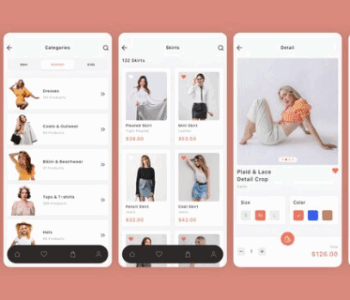 Technology
Technology
How to Build an Effective Retargeting Strategy for Higher Conversions
- by glorywebs
In today’s competitive digital landscape, capturing the attention of potential customers is only half the battle. The real challenge lies in converting those visitors into loyal buyers. A well-executed retargeting strategy is a powerful tool for boosting conversions and ensuring that your efforts in attracting traffic don’t go to waste. Retargeting allows you to re-engage users who have previously interacted with your website or ads, gently nudging them back into your sales funnel. However, building a strategy that leads to higher conversions requires more than just showing ads. It takes understanding user behavior, targeting the right audience, and delivering tailored messages at the right time.
Understanding Retargeting and Remarketing
Before diving into the details of how to build an effective retargeting strategy, it’s important to clarify the difference between Retargeting vs Remarketing. While both terms are often used interchangeably, they have subtle distinctions. Retargeting usually refers to using display ads or social media ads to re-engage visitors who have shown interest in your site or products. On the other hand, remarketing involves reaching out to potential customers through email marketing based on their previous actions on your site.
Knowing these differences helps you tailor your approach to meet specific goals and customer needs, ultimately enhancing your retargeting efforts.
The Importance of a Retargeting Strategy
A retargeting strategy ensures that you are not leaving potential customers behind. People often visit websites but leave without purchasing for a variety of reasons. Perhaps they were distracted or weren’t ready to commit. With retargeting, you give them another chance to take action, reminding them of the products or services they showed interest in. This helps to nurture leads, build brand awareness, and ultimately increase the likelihood of conversion.
By targeting people who have already interacted with your brand, you are focusing on a much warmer audience compared to cold leads, which tends to result in a higher return on investment (ROI). Retargeting ads are more likely to be clicked because the audience is already familiar with your brand and may need just a little push to complete their purchase.
Steps to Build an Effective Retargeting Strategy
To make your retargeting strategy as effective as possible, it’s essential to approach it with a clear plan. Here’s how you can create a strategy that leads to higher conversions:
1. Segment Your Audience
Not all website visitors are equal, and treating them as such can reduce the effectiveness of your ads. The first step in building an effective retargeting strategy is segmenting your audience based on their behavior on your site. For example:
- Page visitors: Those who visited specific product pages but didn’t make a purchase.
- Cart abandoners: Those who added items to their cart but didn’t complete the transaction.
- Recent buyers: Those who recently made a purchase and may be interested in complementary products.
Segmenting your audience helps you deliver personalized ads that speak directly to the visitor’s previous interaction with your site, increasing the likelihood of conversion.
2. Use Relevant Ad Creative
Once you’ve segmented your audience, the next step is to create retargeting ads that are relevant to their previous actions. For example, if someone abandoned their cart, showing them ads with the exact products they left behind can serve as a reminder.
Tailor your messaging to meet the needs and interests of each segment. Highlight benefits or offer discounts or incentives to encourage users to return to your site and complete their purchase. Personalized ads resonate more with audiences and are far more effective in encouraging conversions than generic ads.
3. Frequency and Timing Matter
It’s important to strike a balance when it comes to ad frequency. If you show your retargeting ads too frequently, it can become annoying, leading to ad fatigue and potential negative feelings toward your brand. On the other hand, if you show them too infrequently, you risk losing the opportunity to convert a potential customer.
Start by testing the frequency of your ads and adjust based on user interaction. You also need to consider the timing of your retargeting efforts. For example, someone who abandoned their cart may need to be retargeted within a few hours to a day, while someone who viewed your website a few weeks ago may require a more general reminder or a new offer.
4. Leverage Dynamic Retargeting Ads
Dynamic retargeting is an advanced form of retargeting ads that allows you to show specific products that users have previously viewed on your website. This level of personalization enhances the relevance of the ads, making them more enticing and increasing the likelihood of conversion. By dynamically showcasing products or services tailored to the interests of each user, you create a more engaging ad experience.
5. Test, Optimize, and Refine
No retargeting strategy is complete without continuous testing and optimization. Regularly test different aspects of your ads, such as copy, visuals, and calls to action, to see what resonates best with your audience. Also, test different retargeting platforms (Google, Facebook, Instagram, etc.) to determine where your audience is most responsive.
Use the data and analytics from your campaigns to refine your strategy. This could involve adjusting your audience segments, changing your ad creatives, or experimenting with new offers. The more you test and optimize, the better your retargeting efforts will become.
Measuring Success and Adjusting Strategy
To gauge the success of your retargeting strategy, closely monitor your conversion rates, click-through rates (CTR), and return on ad spend (ROAS). If you’re not seeing the expected results, it might be time to revisit your audience segments, ad creatives, or frequency. A strong retargeting campaign is constantly evolving based on data and insights.
Conclusion
An effective retargeting strategy is one of the most powerful tools in digital marketing. By targeting potential customers who have already interacted with your brand, you can increase the chances of conversion and ultimately boost your bottom line. Remember to segment your audience, create relevant and personalized ads, and optimize your campaigns for the best results. With a strategic approach, your retargeting efforts will help you turn casual visitors into loyal customers.
Read More: AI Development Services: The Complete Guide for Beginners & Experts









